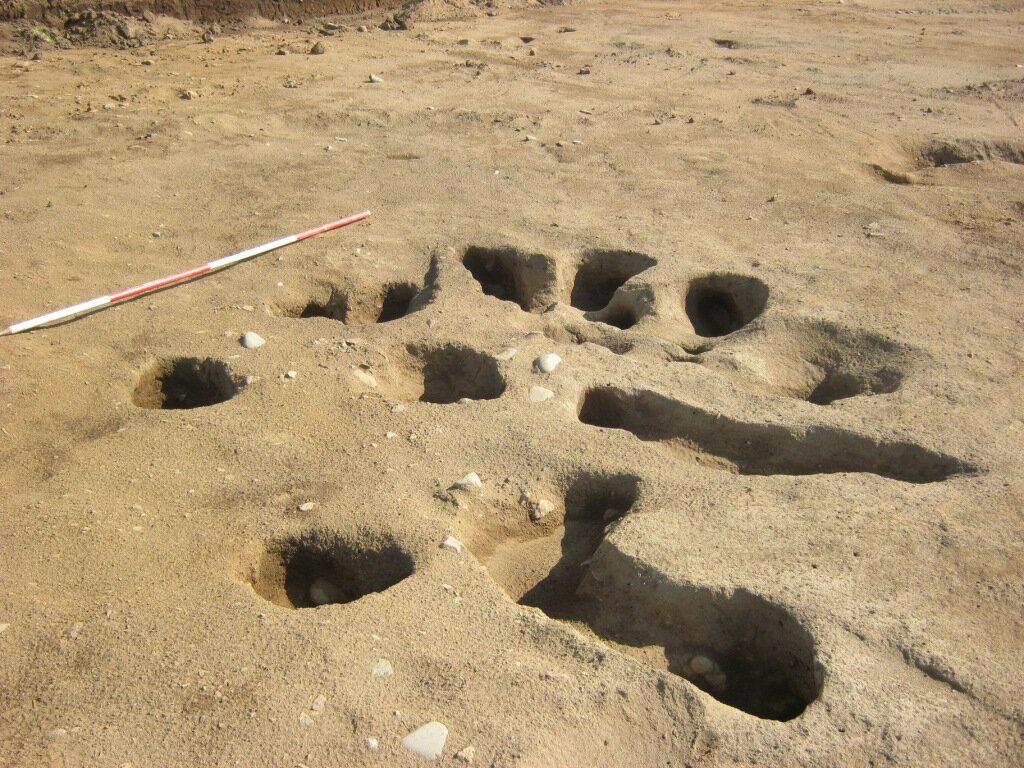Excavations at Greenan: from Mesolithic to Post-medieval
In the summer of 2015, AOC carried out excavations at Greenan in Ayrshire, on behalf of Mactaggart and Mickel. The excavations revealed evidence of eight thousand years of human occupation, ranging from the middle stone age (Mesolithic) to the 17th century.
The remains of three small hut circles of Mesolithic date (c. 8000-4000 BC) were recorded (one shown to the right). These structures are very rare within the archaeological record of Great Britain, with only a handful of recorded examples. The structures were small, ranging from three to six metres in diameter, and produced small numbers of flint tools and waste material from their production.
Further prehistoric evidence was discovered, including Neolithic (c. 4000-2500 BC) pottery (below), and ring-groove and post-ring roundhouses. Some of the pottery has both impressed and incised decoration and may be a transitional form between later Neolithic ceramic traditions. The sherds shown here are conjoining fragments of the same vessel, which measured around 30cm in diameter at the rim. At the point where the rim sherd has broken away from the body sherds, you can just make out two perforations, which are likely to have continued at regular intervals around the circumference of the pot, perhaps to allow a skin cover to be ‘sewn’ across the mouth.
The roundhouse structures are a common feature of Bronze (c. 2500-700BC) and Iron Age (c. 700 BC-AD 43) activity across Scotland. In addition, numerous other pit and post-hole features were recorded with large associated assemblages of chipped stone tools.
Later activity relating to the later medieval and early modern periods was also revealed in the form of numerous ditches and pits. These are the traces of field systems associated with farming. These remains are also relatively rare within the archaeological record, especially within lowland Scotland.
AOC is currently working on a comprehensive programme of post-excavation analysis and interpretation.


